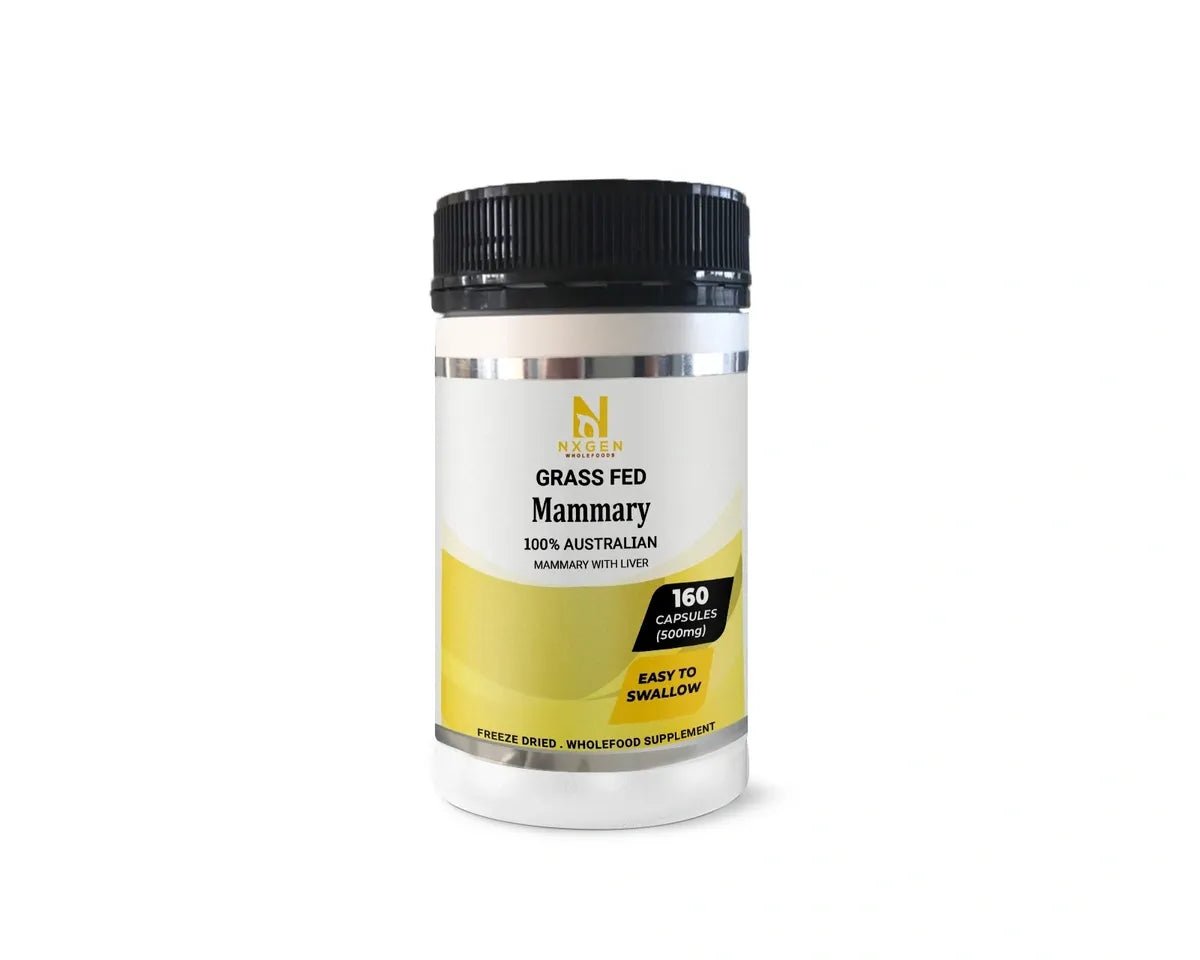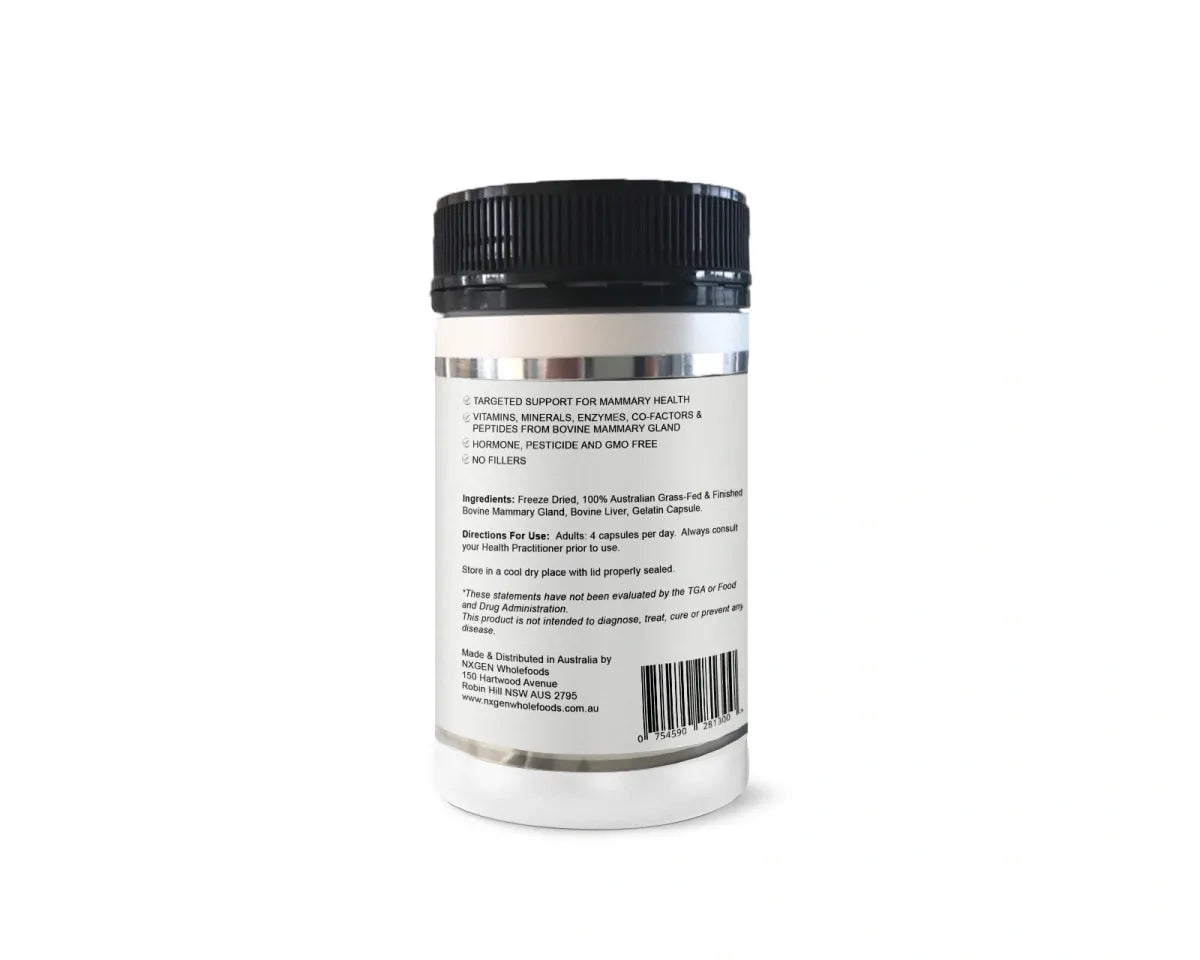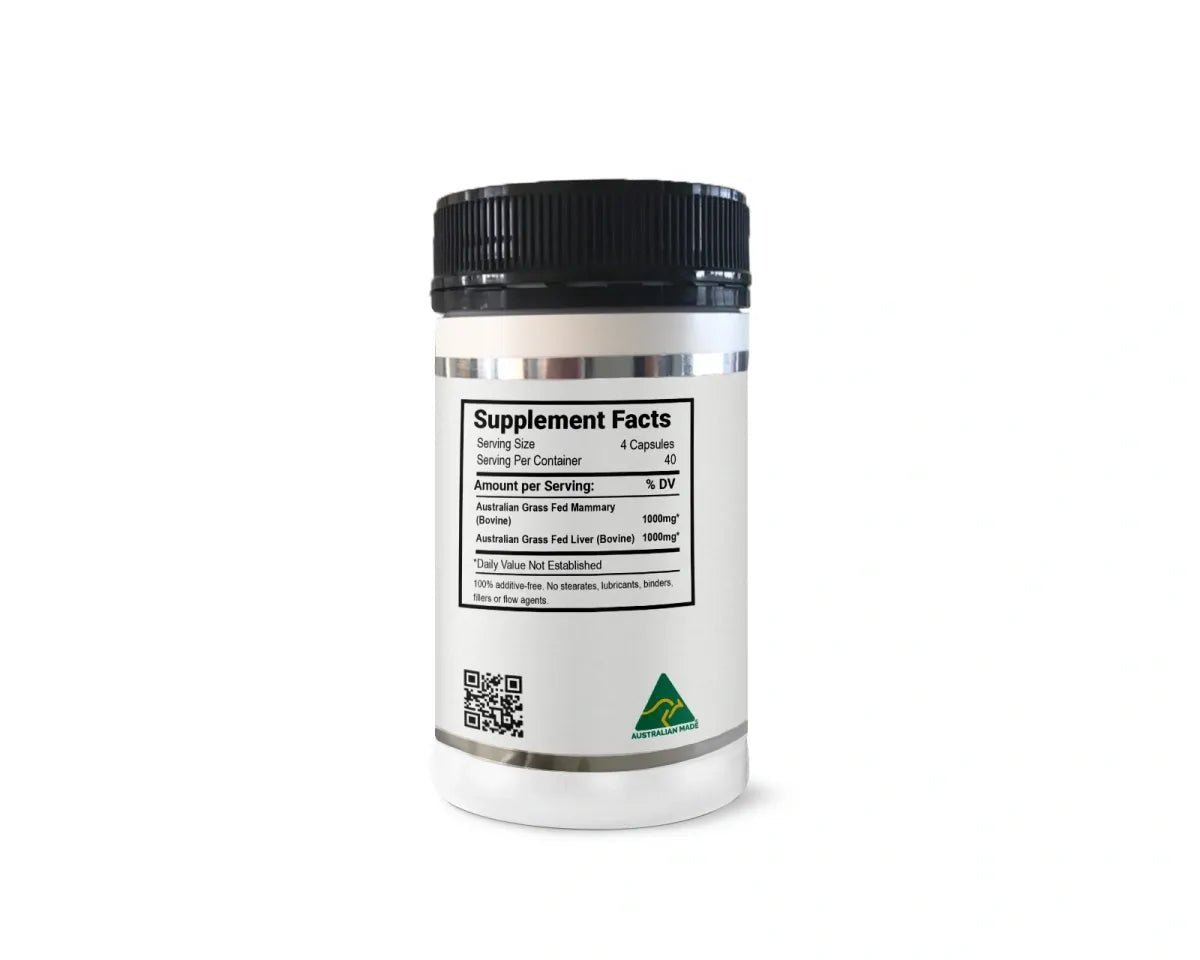Description
Consuming Mammary may nourish and support our own Mammary and Liver. Especially helpful for women to maintain healthy breasts, to support recovery from mastitis and other glandular disorders.
- Mammary is rich in bioactive co-factors.*
- Supports Mammary Health*
For centuries indigenous cultures have been using glandulars to target like for like support. Glandulars have been considered to contain nutritional peptides, enzymes, and substances believed to be hormone precursors. Consuming glandulars helps directly supply enzymes. Enzymes are biological catalysts that encourage metabolic, catabolic, and digestive processes in the body. They help rebuild and detoxify.
What was thought to be true by our ancestors is now scientifically proven to contain peptides, cofactors, vitamins and minerals that travel to the corresponding organ to aid ones own health.
"Radioisotope labelling studies in animals have shown conclusively that, when eaten, organs and glands selectively travel to the corresponding organs and glands in high concentrations. This research, done at the University of Scotland in Edinburgh, lends credence to the ancient practice of eating animal organs to help ensure health in one’s corresponding organs..."- Dr. Ron Schmid, ND
The breasts are involved in lactation, sexual attraction, and sexual response. Bovine mammary tissue has been sometimes advised for disorders related to female breasts such as nipple pain, lymph node enlargement, breast underdevelopment, mastitis, menstrual pain, nipple inflammation, congestion, and lactation difficulties.
Harrower, a pioneering researcher of oral glandulars, believed glandulars were effective because endocrine glands experienced something he referred to as “hormone hunger” . When Harrower used the term “hormone” this should be interpreted to include nutrients, enzymes, peptides, as well as specific hormone precursors.
The mammary gland is a complex organ of various tissue and cell types and epithelia cells and fibroblasts are predominant components of mammary parenchyma and stroma, respectively. Fibroblasts play crucial roles in the development of human mammary glands, as well as in lactation. Accumulating evidence suggests that the fibroblast functions as a structural element and as a vital immuno-regulatory cell to help reduce inflammation.
In addition to their role as structural elements, fibroblasts could serve as resident sentinel cells involved in wound healing and cleaning invading microorganisms; this function is activated by substances released during tissue injury, derived from infectious microorganisms, or caused by other environmental factors.
Studies conducted over the recent decade have demonstrated that tissue-resident fibroblasts influence the persistence of the inflammatory lesion of organs.
With the stimulation of cytokines, which are primarily produced by monocytes/macrophages early in the inflammatory reaction, fibroblasts can synthesise and express an upregulated effector phenotype for some cytokines; these fibroblast-derived cytokines may play a significant role in the amplification of the inflammatory response.
The roles of fibroblasts in the regulation of immune responses have been clarified in the inflammatory reactions of colitis, airway inflammation and tumour-enhancing inflammation of the mammary gland.
GRASS FED MAMMARY
— Mammary Glandular contains proteins, Vitamins, Minerals and Other Beneficial Cofactors for targeted support. —
GRASS FED LIVER
— Liver is natures superfood, with the most vitamins and minerals of any food on the planet. —
FDA STATEMENT*
Any statements made on this website have not been evaluated by the Australian Therapeutic Goods Administration (TGA) or Food and Drug Administration (FDA). Product information and statements made are not intended to diagnose, prevent, treat or cure any disease.
References
Popov I.M., et al. Cell therapy. J International Academy of Preventive Medicine,1977; 3:74-82
Burns D. Accumulating scientific evidence supports glandular therapy. The Digest of Chiropractic Economics, Nov/Dec 1987: 74-79
Schwartz EF. Glandular therapy. The American Chiropractor, January/February 1983:14-18
Howell E. Enzyme Nutrition. Avery Publishing Group: Wayne ( New Jersey): 11-29, 1985
Protein in cow’s milk slows growth of cancer cells in lab tests: Mammary derived growth inhibitor ( Cornell University). Cancer Weekly April 20, 1992;12:2
Harrower H. Practical Organotherapy. 3rd ed. W.B. Conkey Co.: Hammond ( Indiana): 31-36, 1921
Raw Glandular Therapy. ABCO Labs, Concord (CA), circa 1998
Dunbar R. Foraging for nature’s balanced diet. New Scientist August 31, 1991:25-28
Thiel R. Might disorders of calcium cause or contribute to myoclonic seizures? Med Hypo. 2006; 66(5):969-974
DeCava JA. Glandular supplements. Nutrition News and Views 1997; 1(3):1-10
https://www.nature.com/articles/srep27462 Stromal fibroblasts derived from mammary gland of bovine with mastitis display inflammation-specific changes | Scientific Reports - Nature
Payment & Security
Your payment information is processed securely. We do not store credit card details nor have access to your credit card information.




